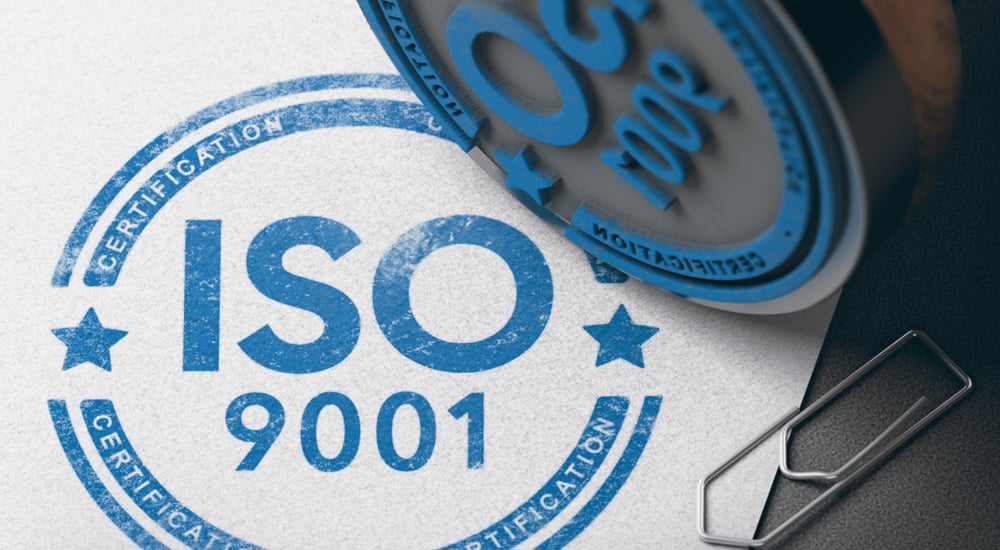5 steps for your company’s food Quality Control
Food quality is a complex subject, because it involves different concepts and mainly, different interpretations, from establishment to establishment, from person to person.
Having a well-established Quality Control for your business is critical for your company to maintain your products’ quality standard and to satisfy your customers' needs.
Rest assured! In this text, we will answer your questions on this subject.
In this article, you’ll find:
- The definition of Quality Control
- How to perform Quality Control
- Quality Control in fruit and vegetable
- The person responsible for performing the Quality Control
- How to automate this process
- How CLICQ will improve your processes
This article focuses on Quality Control in the food sector, especially in the fruit and vegetable sector.
Well, as we mentioned earlier, food quality is a complex topic, but let's clarify it for you.
What is Quality?
Quality is a set of characteristics inherent to an object that meets certain requirements.
However, this term can have other meanings. When associated with the transformations undergone by products, it’s considered a measure of excellence and can refer to a state of being free from defects. According to ISO 9000, quality is determined by the ability to satisfy customers and by the impact it has on relevant stakeholders.
Therefore, the definition of quality can change from enterprise to enterprise.
For example, John already knows that his customers don't like to buy unripe fruit. They prefer to buy fruit that’s already ripened. At Rita's shop, on the other hand, her customers prefer to buy unripe fruit so that it can ripen at home.
Therefore, John and Rita's quality standards are different, although they both sell the same products.
Having understood that Quality isn’t the same for every enterprise, let's look at what Quality Control is.
What is Quality Control?
This part of quality management focuses on meeting quality requirements, according to ISO 9000, which describes the fundamentals of quality management systems and establishes the terminology for such systems.
A quality requirement is the expectation of a certain aspect of the respective product. These requirements need to be applicable and measurable.
Let's suppose that at your grocery store, your customers demand bigger apples, i.e. with a larger diameter, averaging 10 cm.
Therefore, one of the quality requirements analyzed for this fruit will be its size. And its size must be an average of 10 cm for this apple to be within its quality standard. Do you see how this requirement is applicable and measurable?
Now, let's check out the step-by-step instructions on how to establish good Quality Control.
How to perform Quality Control
1st - Define what Quality means for your business
That's right, in order to be able to control something, you first need to know what to control, what you have to analyze. And to do so, you have to be clear about what quality means for your business.
Consequently, you need to know which Quality Standard your customers demand.
The ultimate goal of any establishment is to sell, right? (I’m not talking about the purpose of the business; I’m saying that in the end, we all have to sell). In order to sell, we need to please our customers. Something about our product was valuable to them, so they bought it.
Therefore, you must know what your customers care about. What they find valuable enough to want to take it home with them. As in the example above, of John and Rita, you need to know what are the attributes of quality food that your customers value.
With that established, here’s the aha moment, your Quality Standard is ready!
Let's move on to the next step.
2nd - Understand which requirements will be evaluated for each product
For each of your products, know which requirements will have to be evaluated in order to be within your establishment’s Quality Standard.
For example, what size of mango will be sold at your grocery store, or how ripe will the pineapple have in order to be sold.
3rd - Create checklists and SOP's for each product
Creating checklists and Standard Operating Procedures (SOPs) is essential for good Quality Control, because it’s with these documents that we can evaluate whether everything is within the established standards and requirements. The checklists will be used in the Quality Inspection stage.
4th - Monitor results
With the data you have collected on your checklist, you’ll be clear on what your improvement points are.
For example, if you buy your products from five different suppliers, you can analyze which deliver the goods according to your criteria. Then, you can establish action plans, such as changing suppliers, or establishing quality agreements with them.
It’s by analyzing the checklist answers that you’ll obtain an overview about your business and the fulfillment of the requirements.
5th - Adjustments and feedback
We’ve reached the last step: adjustments and feedback. This step is key for the implementation of continuous improvement, which is one of the seven principles of quality.
It is with these adjustments that you can see which points will require adjustments for the constant improvement of your Quality Control process.
Quality Control in fruit and vegetables
Quality Control in the food industry, especially regarding fruit, vegetables and greens, covers the entire production process, from the seeds planted to delivery to the end customer.
Who is responsible for performing Quality Control?
Your company can have a team focused on Quality Management or, if you own a small business, you can have just one inspector who is available and engaged in the task.
As you can see, a Quality Control process isn’t implemented quickly. But, we have a solution that can help you become efficient in this task.
Automate your Quality Control and gain efficiency
Here at PariPassu, we want to help the agrifood chain to improve food quality and safety. With this, CLICQ - automated checklist for quality process management - was born.
With it, you have access to all the checklists created for your products’ Quality Control, as well as the action plans for each of the nonconformities found. Automating this process will reduce analysis time and increase your team's efficiency.
How CLICQ will improve your processes?
By using CLICQ, you automate your Quality Control process, provided several benefits to your business, such as:
-
Quick access to the inspection history
Using CLICQ means having quick access to checklists and inspection history, having the files at hand and getting rid of spreadsheets on paper!
-
Practicality and agility
When you finalize the reports, you can automatically send them to the e-mail address you prefer, attach photos, geolocation, and digital signatures. Plus, you have automatic reports and alerts!
-
Streamlined processes
Reduce your quality inspection time by more than half, using the CLICQ tool.
-
Customization
CLICQ is 100% adaptable to your company's needs. Customize the checklists any way you want. You can choose from ready-made templates or create a new one and edit it.
-
Creation of Action Plans and Workflows
Track the troubleshooting of nonconformities through an automated, company-specific action plan process.
-
Quality standard guarantee
You can guarantee that your product will always have the quality you expect by having inspection scores, history, and classification at hand.
Do you like our solution? Make an appointment with one of our experts and find out how we can help you with your Quality Control, talk to an specialist.
I hope that you put these 5 steps into practice soon in order to implement Quality Control in your business. If you have any questions, we’re here to help you, side by side. 💙



